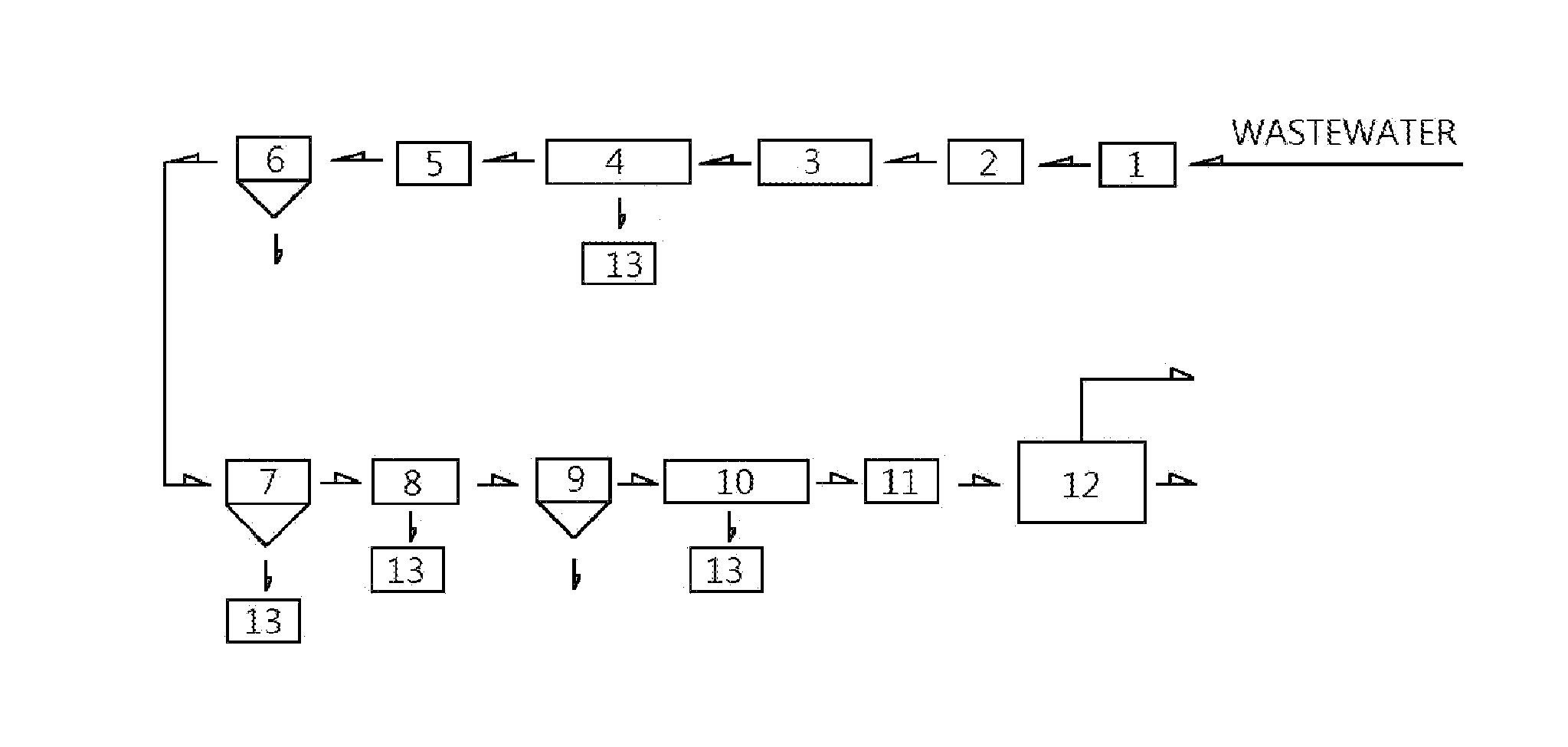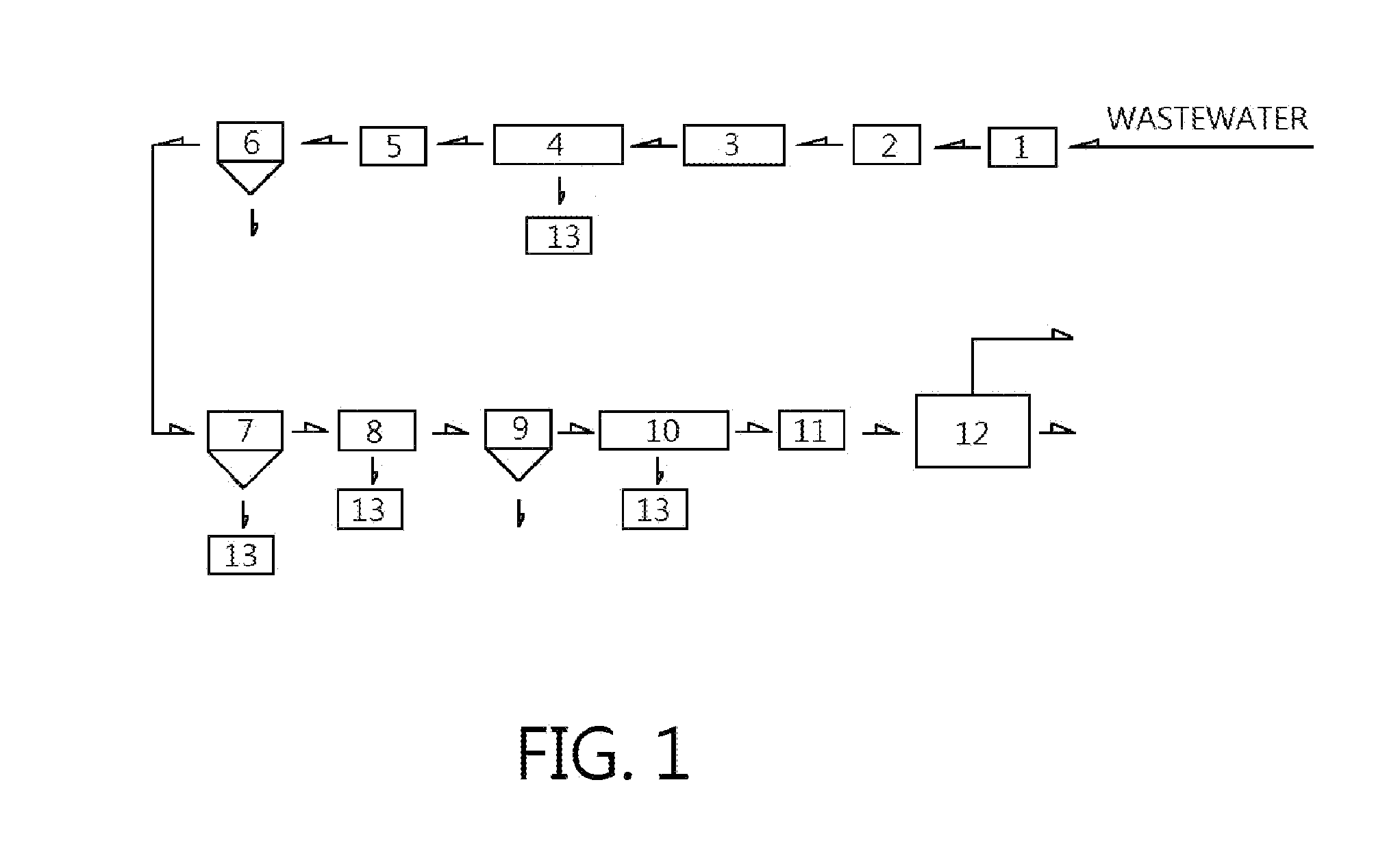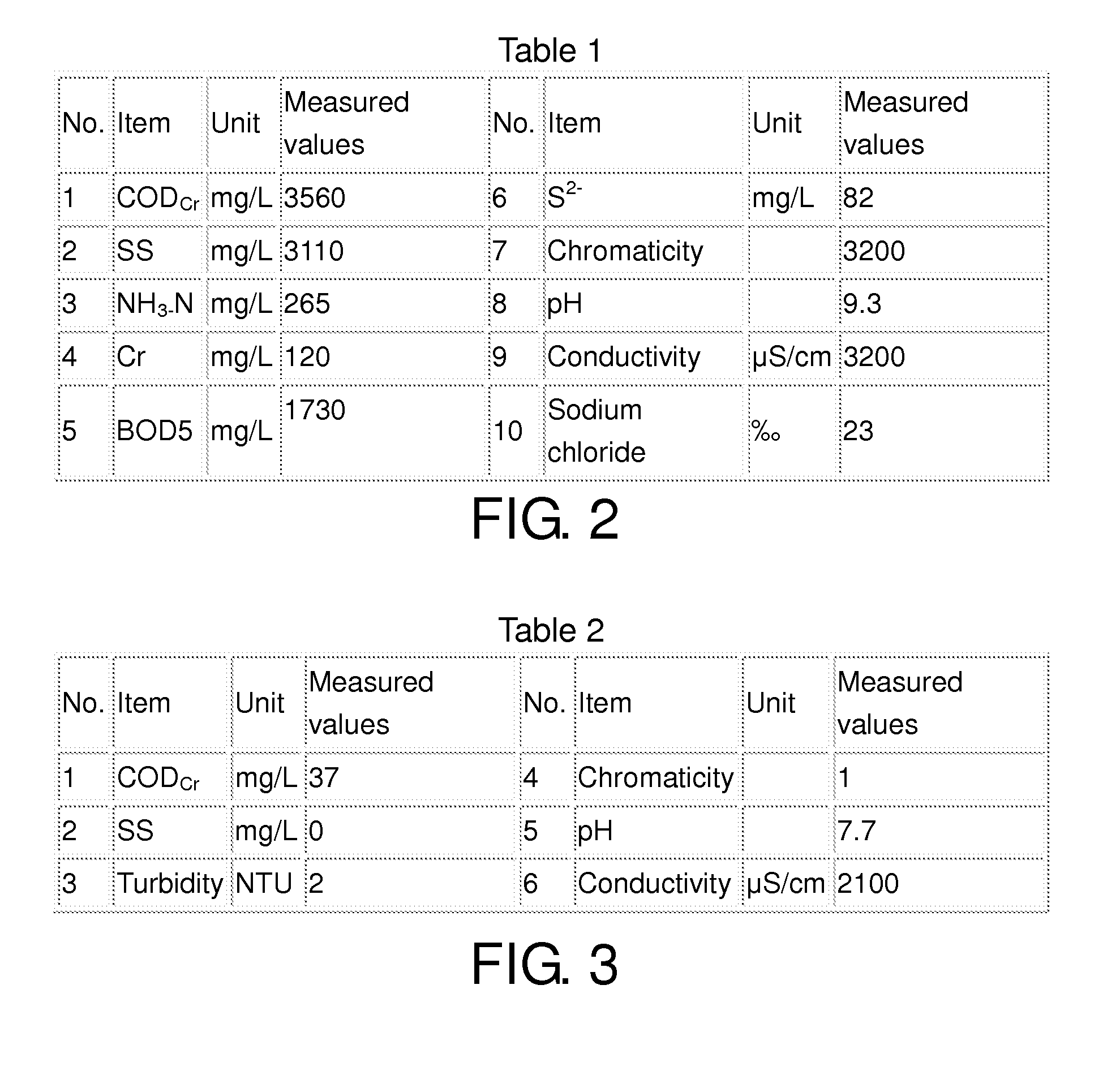Tanning wastewater treatment and reuse apparatus and method therefor
a wastewater treatment and wastewater technology, applied in water treatment multi-stage treatment, water/sewage treatment, separation processes, etc., can solve the problems of chrome tanning wastewater pollution, large volume of freshwater consumption, and most serious pollution of chrome tanning wastewater, so as to reduce the amount of flocculants, reduce the consumption per unit of product chemicals, and reduce the effect of pharmaceutical cos
- Summary
- Abstract
- Description
- Claims
- Application Information
AI Technical Summary
Benefits of technology
Problems solved by technology
Method used
Image
Examples
embodiment 1
Preferred Embodiment 1
Step 1 of Desulfurization
[0062]Flowing tanning wastewater into the coarse filter 1 to remove large particulate solids, next flowing the regulation pool 2 for mixing, and then pumping the wastewater from the regulation pool 2 to the hydraulic sieve 3 to remove fibers and other impurities, and then flowing the filtered wastewater to the desulfurization pool 4. Equivalent concentration of sulfur in wastewater can be determined prior to the desulfurization. Adding a solution of ferrous sulfate with equivalent concentration of 1:1.1 to wastewater for desulfurization and separation into iron sulfide sludge and desulfurized wastewater.
Step 2 of First Nanocatalytic Electrolysis
[0063]After step 1, pump desulfurized wastewater into the first nanocatalytic electrolyzer 5 for electrolysis. The operating voltage of the electrolysis may be 2 to 500V, the voltage between the two electrodes may be 2 to 8 V, electrolytic density is 10 to 300 mA / cm2, the desulfurized wastewater ...
embodiment 2
Preferred Embodiment 2
[0069]As shown in FIG. 1, it is a preferred embodiment of the invention based on nanocatalytic technology for tanning wastewater treatment and reuse apparatus and method therefore. For example, it is a 300 tons / day tanning wastewater treatment, purification, and reuse item. The tanning wastewater (combined wastewater) having indicators is shown in Table 1 of FIG. 2.
[0070]Wastewater flows at a flow rate of 15 m3 / hour into the coarse filter 1 to remove large particulate solids. Next, flows to the regulation pool 2 for mixing. Next, flows wastewater out of the regulation pool 2 at a flow rate of 15 m3 / hour to the hydraulic sieve 3 to filter out fibers and other impurities. Next, flows into the desulfurization pool 4 in which equivalent concentration of sulfur in wastewater can be determined prior to the desulfurization, and then adding a solution of ferrous sulfate with equivalent concentration of 1:1.1 into wastewater for desulfurization and separation into iron ...
embodiment 3
Preferred Embodiment 3
3,000 Tons / Day Tanning Wastewater Treatment, Purification, and Reuse Project
[0071]The tanning wastewater (combined wastewater) has indicators as shown in Table 3 of FIG. 4.
[0072]Wastewater flows at a flow rate of 15 m3 / hour into the coarse filter 1 to remove large particulate solids. Next, flows to the regulation pool 2 for mixing. Next, flows wastewater out of the regulation pool 2 at a flow rate of 15 m3 / hour to the hydraulic sieve 3 to filter out fibers and other impurities. Next, flows into the desulfurization pool 4 in which equivalent concentration of sulfur in wastewater can be determined prior to the desulfurization, and then adding a solution of ferrous sulfate with equivalent concentration of 1:1.1 into wastewater for desulfurization and separation into iron sulfide sludge and desulfurized wastewater. The desulfurized wastewater flows into the first nanocatalytic electrolyzer 5 for electrolysis. The operating voltage of the first nanocatalytic electro...
PUM
| Property | Measurement | Unit |
|---|---|---|
| voltage | aaaaa | aaaaa |
| voltage | aaaaa | aaaaa |
| current density | aaaaa | aaaaa |
Abstract
Description
Claims
Application Information
 Login to View More
Login to View More - R&D
- Intellectual Property
- Life Sciences
- Materials
- Tech Scout
- Unparalleled Data Quality
- Higher Quality Content
- 60% Fewer Hallucinations
Browse by: Latest US Patents, China's latest patents, Technical Efficacy Thesaurus, Application Domain, Technology Topic, Popular Technical Reports.
© 2025 PatSnap. All rights reserved.Legal|Privacy policy|Modern Slavery Act Transparency Statement|Sitemap|About US| Contact US: help@patsnap.com



